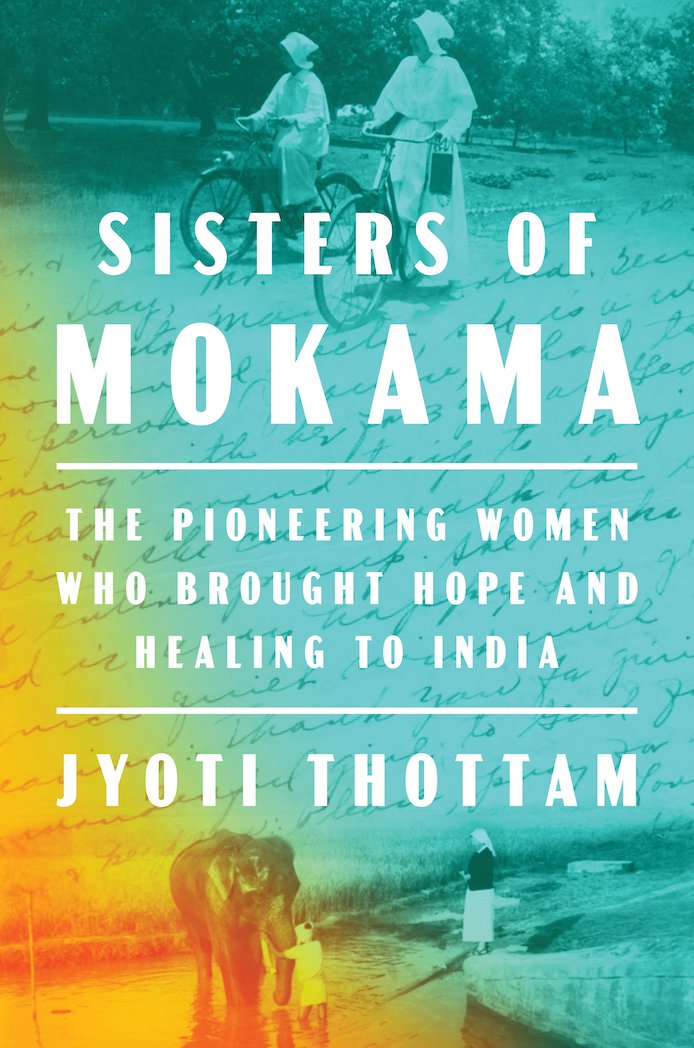“Sisters of Mokama: The Pioneering Women Who Brought Hope and Healing to India” by Jyoti Thottam. Viking (New York, 2022). 384 pp., $28.
Jyoti Thottam, a senior opinion editor at The New York Times, narrates the compelling story of Nazareth Hospital and its founders, six Sisters of Charity of Nazareth, Kentucky. The first missionaries in their order, they traveled to Mokama, India, at the invitation of a renegade Jesuit with grandiose plans.
They arrived knowing nothing about what they would find in post-colonial, post-partition India. “India demanded that they call on the original ideal of the order, that of the resourceful frontier women, to survive.”
In time, partly to meet their own staffing needs, the sisters opened a nursing school. One of its students was Thottam’s mother, Elsy, who had arrived in Mokama from Kerala (the Indian state with the largest Catholic population) as a 15-year-old with severely limited opportunities. Because of this connection Nazareth Hospital had always been important to Thottam’s family, but it was as a distinguished journalist that she set out to learn more about the hospital.
This, her first book, draws on many years of interviews, site visits and archival research to narrate its history from 1947 to 1965. Her prose brings to life the pioneering women who faced challenges with indomitable courage, resourcefulness and professionalism — the Sisters of Charity, Indian novices and the teenage girls and women who overcame poverty and family constraints to enter into a new world as nurses.
“In their letters and in their own words, the women of Nazareth were clear, although not always explicit, about what motivated them,” Thottam writes.
“It was ambition and longing, passion and hunger. Not for what they would find in Mokama — they knew so little about the world they would enter — but for something more than what they had. These words are not often used to describe women in religious communities in midcentury America, or teenagers growing up on rubber plantations in southern India, but they are the only ones equal to this story. It was this desire, more than economic exigency or religious fervor, that brought them to Mokama, and it was desire that allowed them to endure and thrive in a harsh and unforgiving place.”
Thottam provides the reader with the context in which her story takes place. Through her vivid writing we learn about the betrayal of India by Britain during World War II, the systemic violence of colonialism, the fear, rage and dislocation of partition, the struggles of a newly independent India, the degradations imposed by poverty and the struggles of industrializing an economy hobbled by a caste system, land grabs and political turmoil.
It is an astonishing litany of suffering that makes all the more impressive the people and events that shaped Nazareth Hospital into the beacon of hope it is, “perhaps the only place where the hierarchies of caste did not apply.”
The resourcefulness of the Sisters of Charity was remarkable. When the hospital needed distilled water but could not buy it Sister Crescentia Wise set up a still. More impressively she established and ran a free leprosy clinic that began with one patient in the summer of 1952 and by November 1953 “the clinic was treating 625 patients in a single day,” a number that would soon rise to more than 1,000.
Bridget Kappalumakal, one of the first nursing students to have a vocation to the order, chafed at the slow pace of religious formation and led a successful strike by the novices. Mary Martha Wiss, the first Sister of Charity to become a surgeon, would eventually leave because of the incompatibility of her two vocations.
Mokama “had been forever changed by the presence of Nazareth Hospital and the women who built it. They started with an empty godown (warehouse), filled it with medicine and equipment and skill, and animated it with the belief that every person who crossed its threshold was entitled to an equal dignity. This alone was a radical idea in a place where the bodies of Indian men, women and children had been quite literally starved in the service of empire.”
Readers of this history will also be changed by the courage and eloquence of the women and men who come to life through the gifted pen of Jyoti Thottam.
– – –
Linner, a spiritual director, freelance writer and reviewer, has a master’s degree in theology from Weston Jesuit School of Theology.

